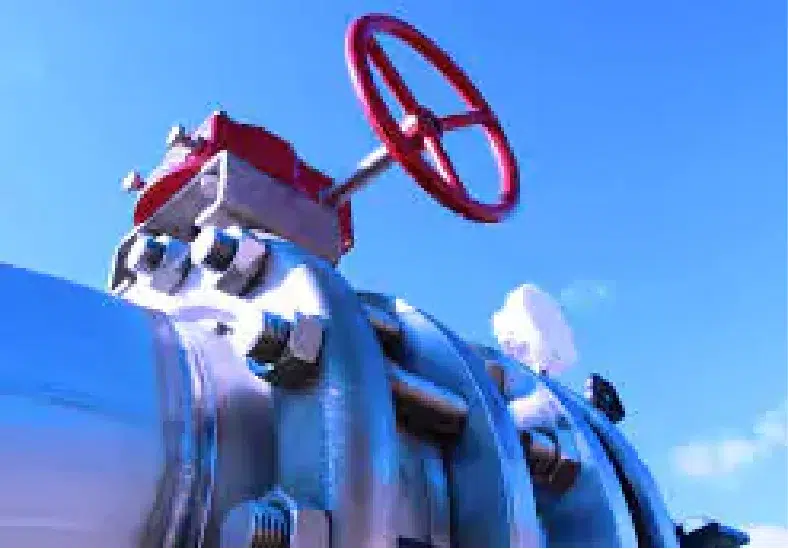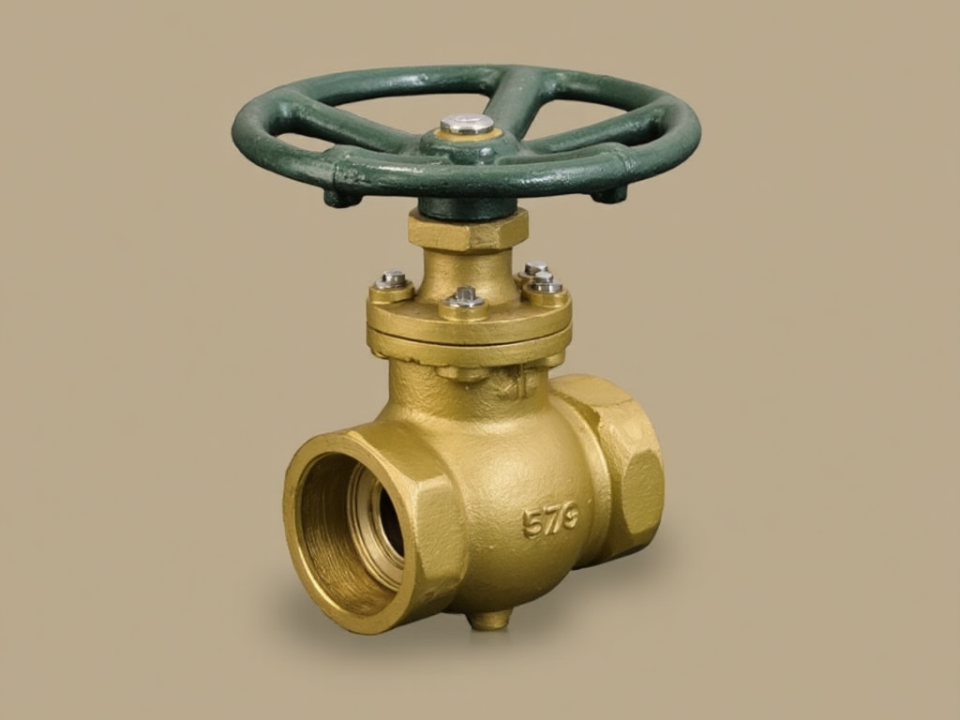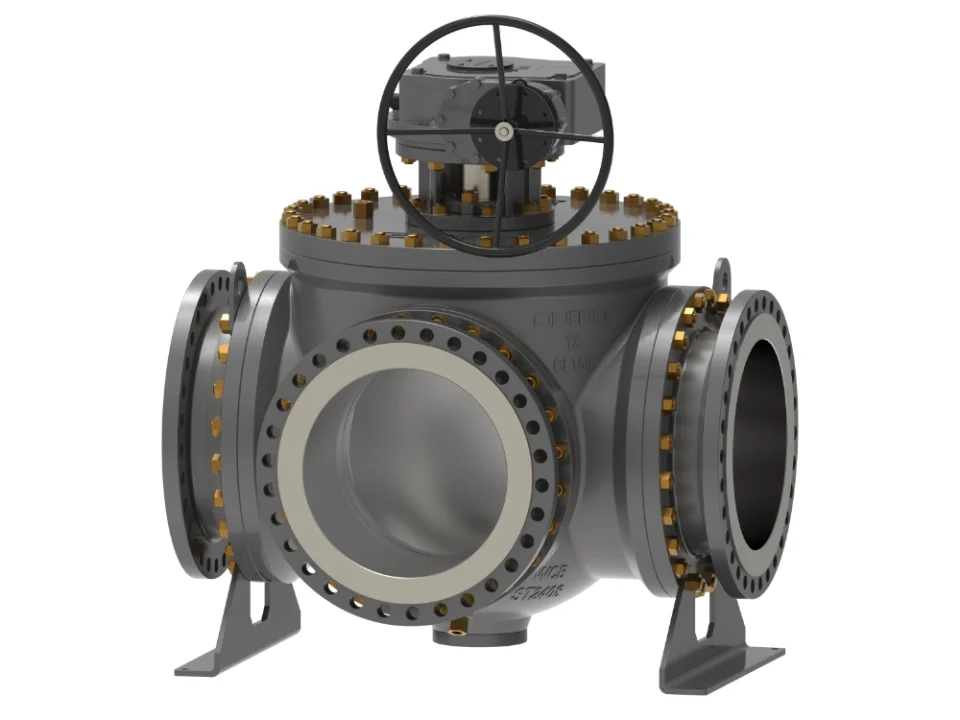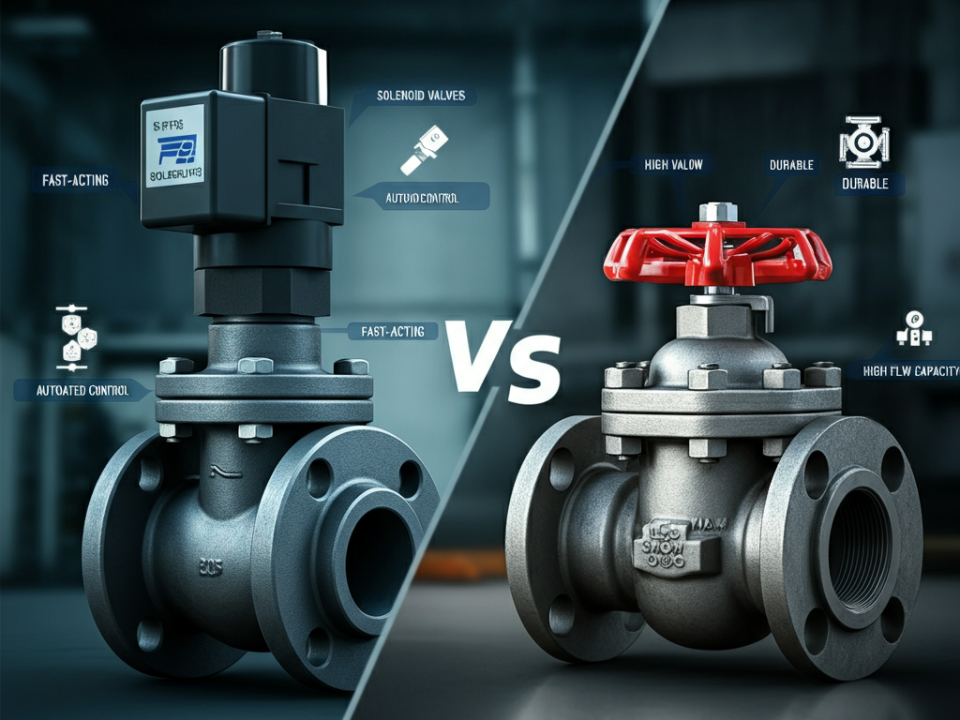تتحكم صمامات الكرة الصناعية في تدفق السوائل والغازات في العديد من الصناعات. وهي تعمل عن طريق فتح أو إغلاق أو منع التدفق جزئيًا عبر كرة داخل الصمام.
يتمتع كل نوع من صمامات الكرة الصناعية بخصائص معينة. بعضها مصمم للعمل مع أنظمة الضغط العالي، في حين أن البعض الآخر مناسب للعمليات الدقيقة.
ما هي أنواع صمامات الكرة الصناعية المتوفرة بشكل شائع اليوم؟ أنواع صمامات الكرة الصناعية هي:
- صمامات الكرة الصناعية العائمة
- صمامات الكرة الصناعية المحورية
- صمامات الكرة الصناعية ذات المدخل العلوي
- صمامات الكرة الصناعية ذات المقاعد الصلبة
- صمامات الكرة الصناعية الملحومة بالكامل
- صمامات الكرة الصناعية ثلاثية الاتجاهات
- صمامات الكرة الصناعية رباعية الاتجاهات
- صمامات الكرة الصناعية للأكسجين
- صمامات الكرة الصناعية على شكل حرف V

هل تبحث عن صمام الكرة الصناعية؟
أنواع صمامات الكرة الصناعية
دعونا نلقي نظرة على أنواع صمامات الكرة الصناعية. كل نوع له نقاط قوة خاصة به، مما يجعله مفيدًا لمهام مختلفة.
| نوع الصمام | وصف | الاستخدام الشائع |
| صمام الكرة العائمة | تتحرك الكرة مع الضغط لإغلاقها بإحكام. مثالية للضغوط المنخفضة إلى المتوسطة. | تطبيقات المياه والغاز والنفط |
| صمام الكرة المحورية | يتم دعم الكرة بواسطة محورين لتحقيق الاستقرار عند الضغط العالي. | خطوط أنابيب النفط والغاز والتطبيقات الثقيلة |
| صمام الكرة للدخول العلوي | يمكن خدمتها من الأعلى دون إزالتها من خط الأنابيب. | المصانع الكيميائية ومصافي النفط |
| صمام الكرة ذو المقعد الصلب | يستخدم مقاعد معدنية لتحمل درجات الحرارة المرتفعة والسوائل الكاشطة. | صناعات السوائل المسببة للتآكل وذات درجات الحرارة العالية |
| صمام الكرة الملحوم بالكامل | تم لحامها بالكامل للحصول على تصميم مقاوم للتسرب. | خطوط الأنابيب تحت الأرض، التطبيقات الحرجة |
| صمام الكرة ثلاثي الاتجاهات | تحتوي على ثلاثة منافذ لخلط السوائل أو تحويلها في اتجاهات مختلفة. | أنظمة الأنابيب المعقدة، خلط السوائل أو تبديلها |
| صمام الكرة رباعي الاتجاهات | تحتوي على أربعة منافذ لاتجاهات تدفق متعددة والتحكم. | المعالجة الكيميائية ومصانع التصنيع |
| صمام الكرة الأكسجين | مُصمم خصيصًا للتعامل بشكل آمن مع غاز الأكسجين، ومنع الشرر. | تطبيقات الأكسجين الطبية والصناعية |
| صمام الكرة على شكل V | يحتوي على فتحة على شكل حرف "V" للتحكم الدقيق في التدفق، وخاصةً عند فتحه جزئيًا. | معالجة المياه، المعالجة الكيميائية |
1. صمام الكرة الصناعية العائمة
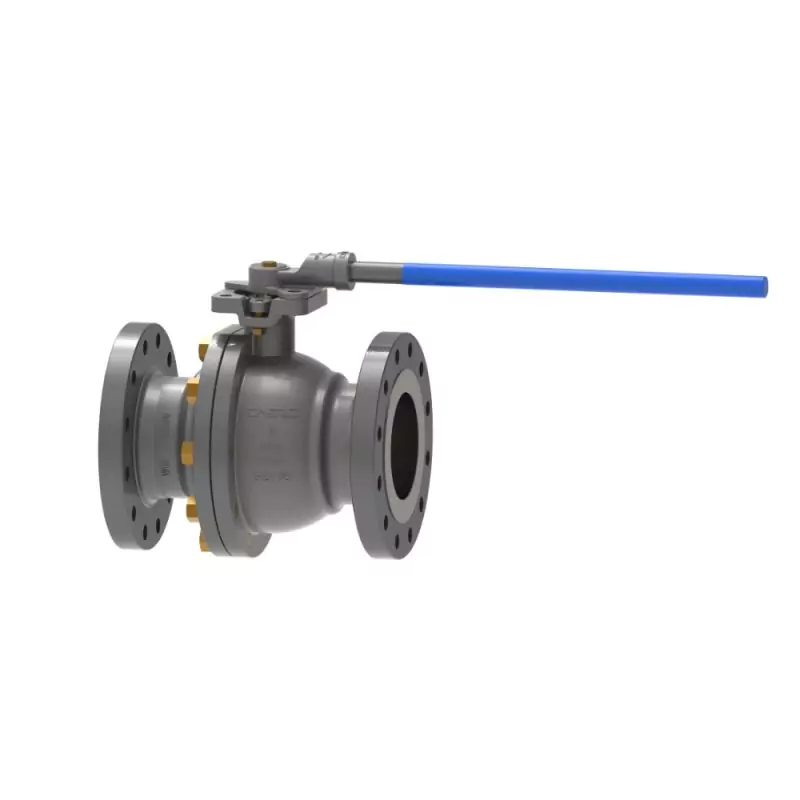
أ صمام الكرة الصناعية العائمة يحتوي على كرة غير ثابتة في مكانها. عندما يتراكم الضغط، فإنه يدفع الكرة ضد مقعد الصمام، مما يخلق ختمًا محكمًا. هذا التصميم بسيط ويعمل بشكل جيد للضغوط المنخفضة إلى المتوسطة.
صمامات الكرة العائمة سهلة الاستخدام وفعالة من حيث التكلفة. تُستخدم عادةً في تطبيقات المياه والغاز والنفط. ومع ذلك، قد لا تكون مثالية للأنظمة ذات الضغط العالي، حيث أن الضغط الزائد قد يؤدي إلى إتلاف مقعد الصمام.
الصمامات العائمة متعددة الاستخدامات وتُستخدم في العديد من الصناعات. فهي توفر إحكامًا موثوقًا به للاستخدامات العامة. وهذا يجعلها خيارًا شائعًا عندما تكون متطلبات الضغط معتدلة.
2. صمام الكرة الصناعية المحورية
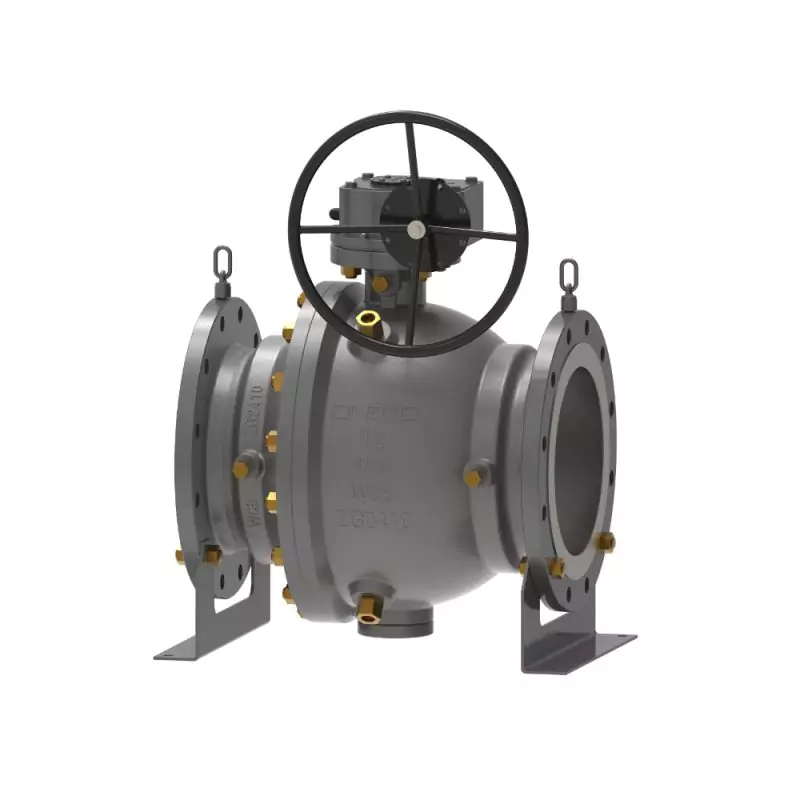
أ صمام الكرة الصناعية المحورية يحتوي الصمام على كرة يتم تثبيتها في مكانها بواسطة دعامتين تسمىان المحورين. تحافظ هذه الدعامة على استقرار الكرة تحت الضغط العالي. يسمح هذا التصميم للصمام بالتعامل مع ضغوط أعلى من صمام الكرة العائم.
صمامات الكرة المحورية تخلق ختمًا قويًا يمنع التسرب. تُستخدم غالبًا في خطوط أنابيب النفط والغاز، حيث يكون الضغط المرتفع شائعًا. يجعل تصميم المحور هذه الصمامات مثالية للتطبيقات الشاقة.
بالإضافة إلى الاستقرار، تم تصميم صمامات المحور لتدوم لفترة أطول تحت الضغط. وهذا يجعلها أكثر متانة في البيئات ذات الطلب المرتفع. عندما تكون هناك حاجة إلى القوة والاستقرار، فإن صمامات المحور هي خيار موثوق.
3. صمام الكرة الصناعي ذو المدخل العلوي
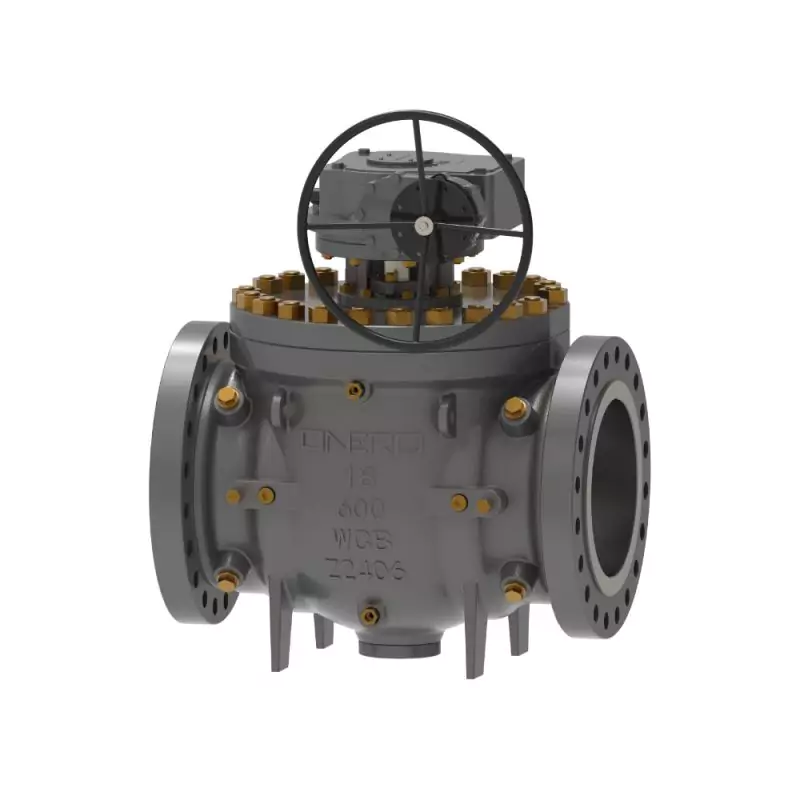
صمامات الكرة ذات المدخل العلوي تم تصميم الصمامات لسهولة صيانتها. وعلى عكس الصمامات الأخرى، يمكن إصلاحها دون إزالتها من خط الأنابيب. توفر هذه الميزة الوقت وتقلل من وقت التوقف أثناء الإصلاحات.
غالبًا ما توجد صمامات الدخول العلوية في المصانع الكيميائية ومصافي النفط. في هذه الصناعات، تكون الصيانة متكررة وضرورية. إن وجود صمام يمكن صيانته دون إزالته من خط الأنابيب يوفر الوقت.
كما أن تصميم المدخل العلوي يجعل هذه الصمامات أكثر أمانًا للعمال. حيث يمكن لفرق الصيانة الوصول إلى الأجزاء الداخلية للصمام دون فصله. وهذا يقلل من خطر التسرب أو الانسكابات، مما يجعله خيارًا أكثر أمانًا للتعامل مع المواد الكيميائية.
4. صمام الكرة الصناعي ذو المقعد الصلب
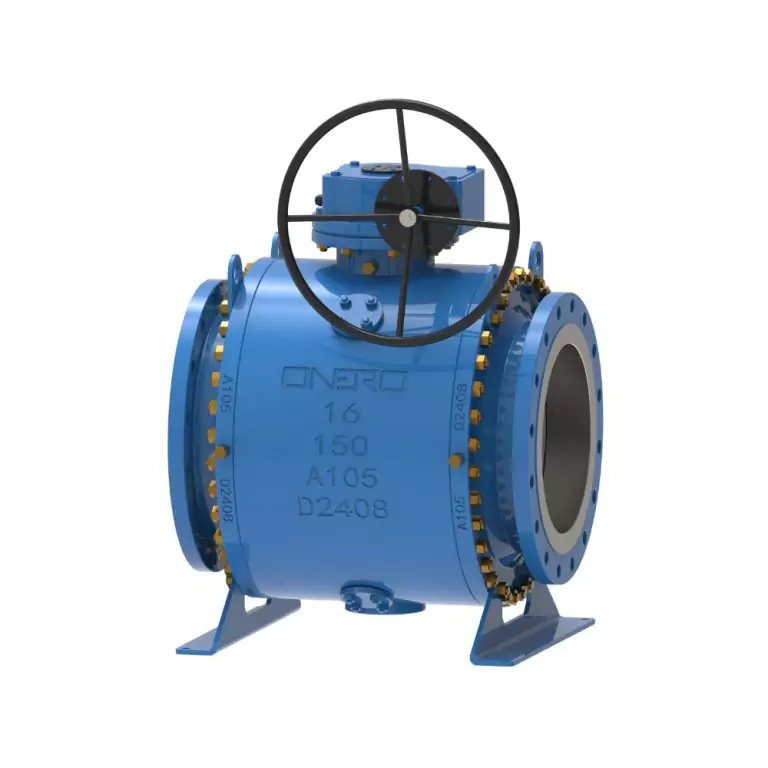
صمامات الكرة ذات القاعدة الصلبة استخدم مقاعد معدنية بدلاً من المواد اللينة مثل المطاط. يمكن لهذه المقاعد المعدنية تحمل درجات الحرارة العالية والمواد الكاشطة. وهذا يجعل الصمامات ذات المقاعد الصلبة خيارًا جيدًا للظروف القاسية.
غالبًا ما تستخدم الصناعات التي تعمل بدرجات حرارة عالية أو سوائل تآكلية صمامات كروية ذات مقاعد صلبة. وهي مصممة لتدوم لفترة أطول، حتى في ظل الظروف القاسية. يساعد استخدام المقاعد المعدنية الصمام على مقاومة التآكل والتلف.
تتمتع هذه المتانة بقيمة كبيرة في البيئات الصعبة. تتطلب الصمامات ذات المقاعد الصلبة صيانة أقل واستبدالات أقل. وهذا يقلل التكاليف بمرور الوقت ويحافظ على سير العمليات بسلاسة.
5. صمام الكرة الصناعية الملحومة بالكامل
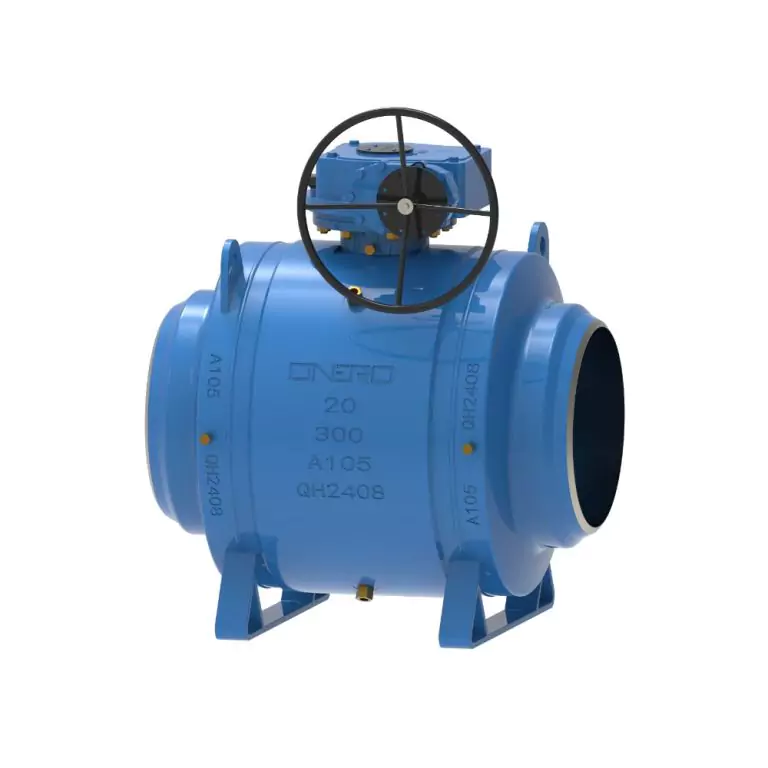
صمامات الكرة الملحومة بالكامل يتم لحامها بالكامل معًا بدون أي براغي أو صواميل. هذا اللحام يجعلها مقاومة للتسرب وقوية جدًا. غالبًا ما تُستخدم هذه الصمامات في خطوط الأنابيب تحت الأرض، حيث يجب تجنب التسربات.
تتطلب الصمامات الملحومة بالكامل القليل من الصيانة. وهي مثالية للمناطق التي يصعب الوصول إليها، مثل خطوط الأنابيب المدفونة أو تحت الماء. يحافظ تصميم هذا الصمام على إغلاقه وتأمينه في الظروف القاسية.
كما أن التصميم الملحوم يجعل هذه الصمامات متينة للغاية. فهي قادرة على تحمل الاهتزازات والصدمات والضغط العالي. وتوفر الصمامات الملحومة بالكامل موثوقية طويلة الأمد في التطبيقات الحرجة.
6. صمام الكرة الصناعي ثلاثي الاتجاهات
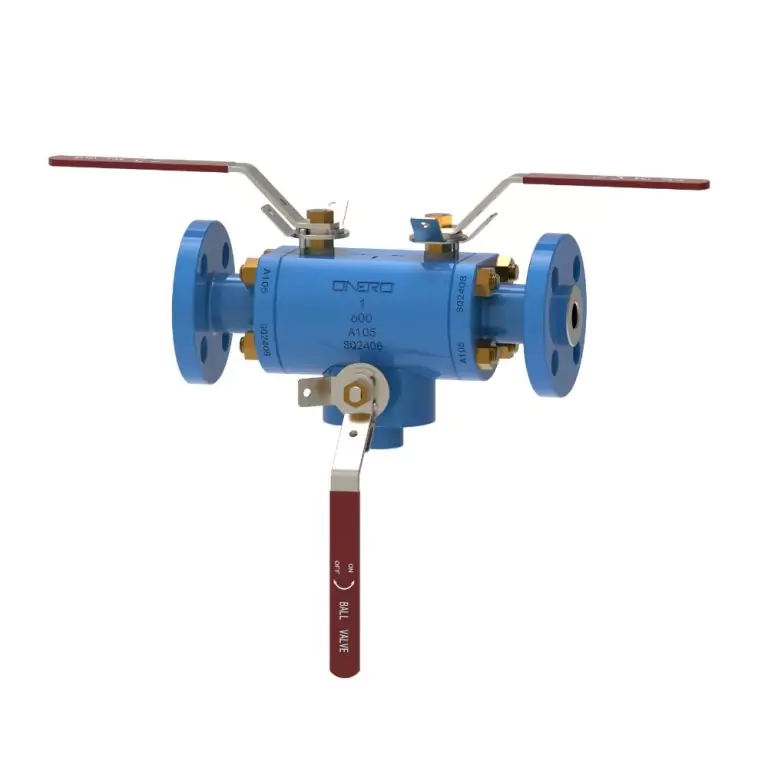
أ صمام الكرة ثلاثي الاتجاهات يحتوي على ثلاثة منافذ لتوصيل الأنابيب. يسمح هذا الإعداد للصمام بتوجيه التدفق في اتجاهات مختلفة. يمكن استخدامه لخلط السوائل من مصدرين أو تحويل السوائل من أنبوب إلى آخر.
صمامات الكرة ثلاثية الاتجاهات متعددة الاستخدامات للغاية. يمكن إعدادها على شكل حرف "L" أو "T". تتيح هذه المرونة للمستخدمين التحكم في الاتجاه ومعدل التدفق بسهولة.
غالبًا ما تستخدم الصناعات التي تحتاج إلى خلط أو التبديل بين سوائل مختلفة صمامات ثلاثية الاتجاهات. فهي توفر المساحة من خلال تقليل الحاجة إلى أنابيب إضافية. وهذا يجعلها خيارًا فعالًا لأنظمة الأنابيب المعقدة.
7. صمام الكرة الصناعي رباعي الاتجاهات
أ صمام الكرة رباعي الاتجاهات يحتوي الصمام على أربعة منافذ، مما يوفر خيارات تدفق أكثر. يمكن لهذا الصمام توصيل خطوط متعددة وتغيير اتجاه التدفق حسب الحاجة. هذا التصميم مفيد بشكل خاص في الأنظمة التي تحتاج إلى التحكم المرن في التدفق.
غالبًا ما توجد الصمامات رباعية الاتجاهات في مصانع المعالجة والتصنيع الكيميائية. وهي تساعد في إنشاء مسارات تدفق فعالة في الأنظمة المعقدة. وبفضل وجود المزيد من المنافذ، توفر هذه الصمامات تحكمًا أكبر في اتجاه السائل.
تُعد الصمامات رباعية الاتجاهات مفيدة في الأنظمة متعددة الخطوط. فهي قادرة على إدارة التدفق في اتجاهات مختلفة، مما يوفر مرونة أفضل. وهذا يجعلها مثالية للعمليات التي تتطلب مسارات تدفق دقيقة ومتنوعة.
8. صمام الكرة الصناعية للأكسجين
تم تصميم صمامات الكرة الأكسجينية خصيصًا للتعامل مع غاز الأكسجين. يمكن أن يكون الأكسجين شديد التفاعل، لذا تم تصميم هذه الصمامات لمنع الشرر. وهي تستخدم مواد خاصة تقلل من خطر الاشتعال.
تُستخدم صمامات الأكسجين بشكل شائع في التطبيقات الطبية والصناعية. فهي تساعد في التحكم في الأكسجين بأمان، مما يقلل من مخاطر الحرائق. يعد استخدام الصمام المناسب للأكسجين أمرًا بالغ الأهمية للسلامة.
تتبع هذه الصمامات معايير صارمة للسلامة. تساعد المواد والتصميم المستخدم في هذه الصمامات على ضمان التعامل الآمن مع الأكسجين. وهذا أمر ضروري في الأماكن التي يتم فيها تخزين الأكسجين أو استخدامه بانتظام.
9. صمام الكرة الصناعي على شكل حرف V
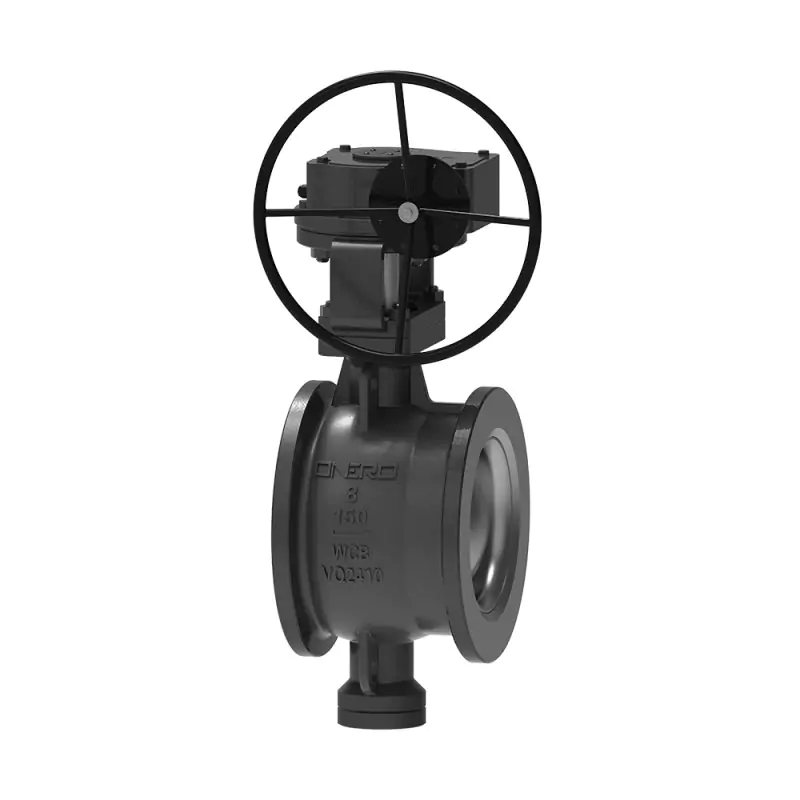
صمامات الكرة الصناعية على شكل حرف V تحتوي الصمامات على فتحة على شكل حرف "V". يسمح هذا الشكل بالتحكم الدقيق في التدفق، خاصة عندما يكون الصمام مفتوحًا جزئيًا. تُستخدم في التطبيقات التي تتطلب معدل تدفق دقيق.
تُستخدم الصمامات من النوع V غالبًا في الصناعات مثل معالجة المياه والمعالجة الكيميائية. فهي تسمح بالتحكم في التدفق بشكل أفضل من الصمامات الكروية القياسية. هذه الدقة مفيدة في الأنظمة التي تتطلب قياسات دقيقة.
تساعد هذه الصمامات على تحسين دقة التدفق. في العمليات التي تعتمد على تدفق ثابت، تعد الصمامات من النوع V أداة مهمة. يوفر تصميمها الفريد تحكمًا أدق، مما يجعلها ضرورية في العديد من الصناعات.
خاتمة
يتمتع كل نوع من صمامات الكرة الصناعية بخصائص فريدة تناسب مهام محددة. إن اختيار الصمام المناسب يعني فهم احتياجات نظامك. سواء كنت بحاجة إلى التحكم الدقيق أو المتانة أو الأمان، فهناك صمام كرة صناعي يناسبك.
لاستكشاف المزيد حول هذه الصمامات، قم بزيارة موقع ONERO صفحة المنتج أو اتصل بنا اليوم للعثور على الخيار الأفضل الذي يناسب احتياجاتك.

